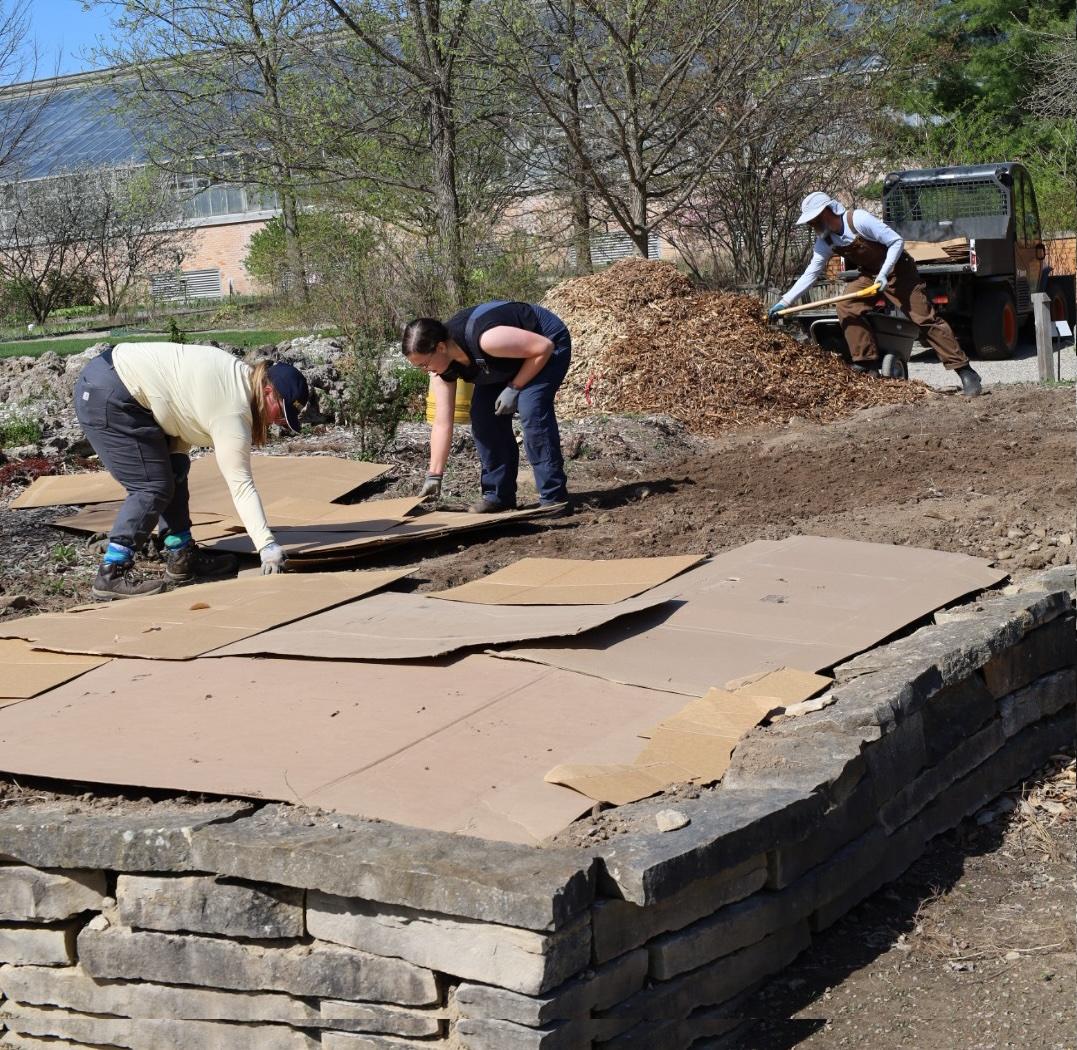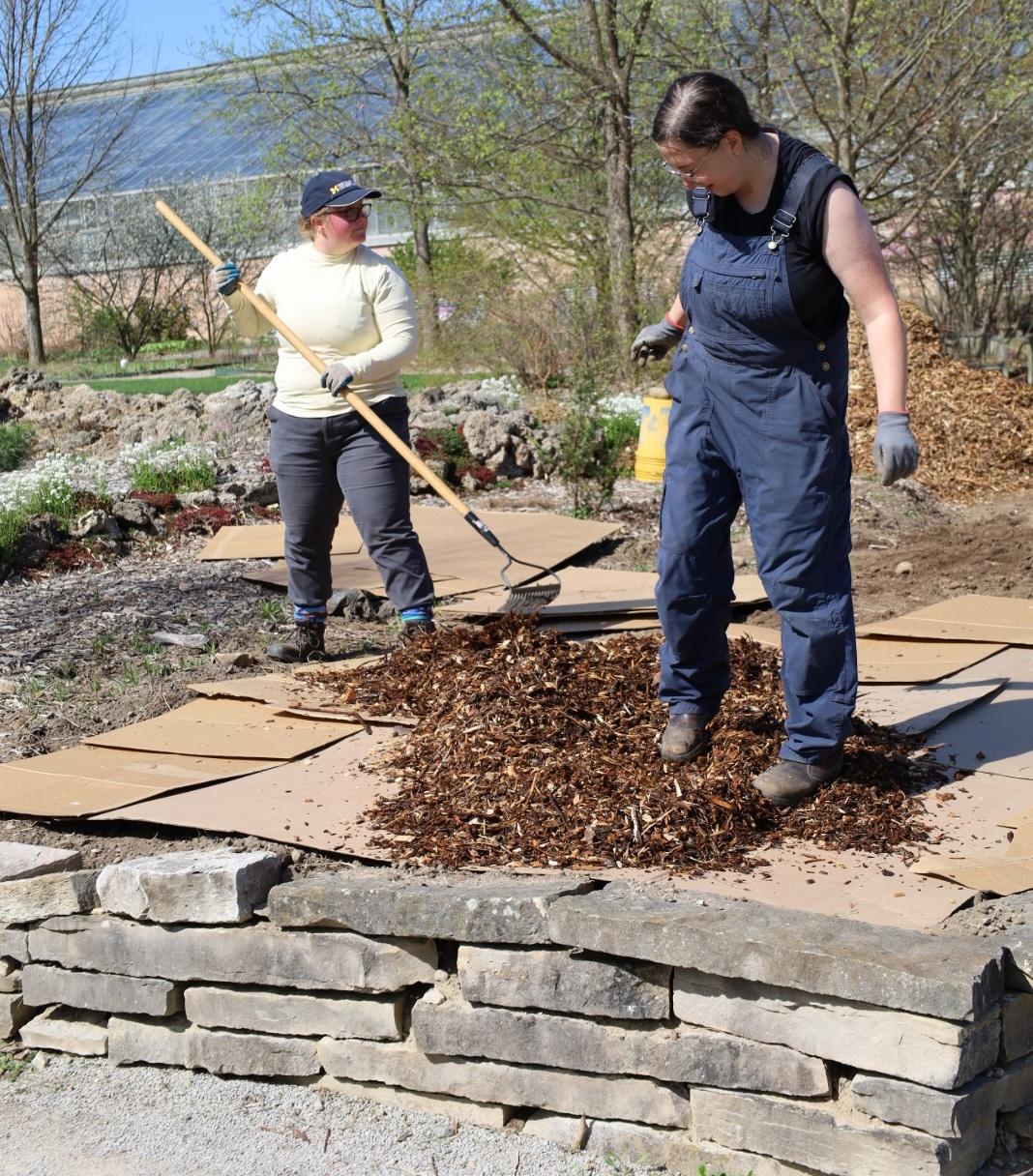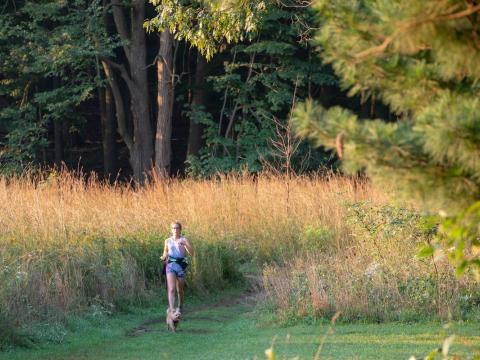Eve Zikmund-Fisher
Looking to transform your lawn or reclaim a weedy patch of garden without digging, tilling, or battling landscape fabric? MBGNA’s Horticulture Technician, Eve Zikmund-Fisher, guides us through sheet mulching, a technique that uses cardboard to block weeds and mulch to create a tidy, plant-ready surface that improves over time
Sheet mulching, also known as lasagna gardening, uses layers of cardboard and organic material to block sunlight, deprive weeds of oxygen, and improve soil health. It’s an easy way to expand a planting bed, eliminate lawn, or prep a garden area before you plant.
Eve’s tips on how to sheet mulch
Start with cardboard: Use plain, non-shiny cardboard. Avoid anything with plastic, tape, or heavy printing as stickers and adhesives won’t break down.

Cut and overlap: Flatten your boxes and cut along the folds so you can overlap the sheets by at least 1–2 inches. This helps prevent weeds from sneaking through. Be sure to cover completely. If you spot holes, patch them with smaller pieces.
Add other organic material (optional): Before adding mulch, you can layer in leaves, grass clippings, or other yard waste on top of the cardboard. If your main goal is to simply smother the weeds, you can skip this step as the cardboard alone will do this step. But if you are hoping to build soil fertility and structure (for example, turning an empty lot into a garden bed), adding organic material is essential. These layers will break down over time, enriching the soil and accelerating the composting process underneath.

Top with mulch: Cover the cardboard (and any organic matter, if used) with mulch to weigh everything down and give your garden a tidy, finished look. Mulch also helps retain soil moisture and supports the gradual breakdown of the cardboard into rich soil.
Plant When Ready: If you can wait, let the cardboard do its work for a year before planting. If you're eager to get started, cut holes in the cardboard to plant sooner. This method works best if you're planting live plants or seedlings rather than sowing seeds directly into the ground.
One of the best things about sheet mulching is its flexibility. You don’t have to tackle your entire garden all at once. You can lay down new sections of cardboard as you get them, making it a great option for transforming parts of your yard over time, especially those you’d like to see become lively garden beds.
